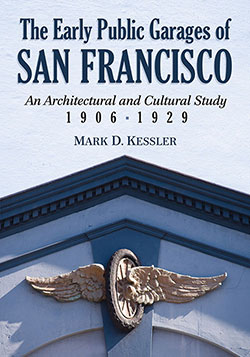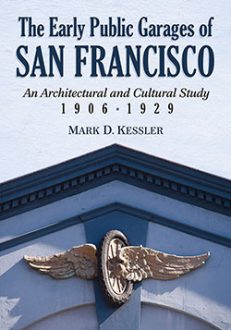The Early Public Garages of San Francisco
An Architectural and Cultural Study, 1906–1929
$49.95
In stock
About the Book
In the quarter century from San Francisco’s devasting fire of 1906 to the beginning of the Great Depression, as automobiles exploded in popularity, new buildings had to be conceived and constructed to provide parking space and repair facilities. This book studies a number of the resulting public garages that featured façade designs based on historical architectural styles. Considering the garages’ function, the façades exhibit a surprising grace and nobility. Through an analysis complemented by photographs (including sixty by noted architectural photographer Sharon Risedorph) and drawings, the author dissects the architectural and cultural factors that lie at the heart of this unexpected merit.
Addressing the discrepancy between the buildings’ beauty and the assumption that old garages are unsightly and disposable, the book examines them as cultural artifacts of the dawn of the Motor Age. The garage is presented as a new form of transportation depot, employing architectural symbolism to celebrate the ascendancy of the automobile over the train. Today, the surviving buildings are vulnerable to real estate development, in part because their quality is misunderstood. The book—a fresh perspective on the value of older utilitarian buildings—concludes with a call to preserve these structures and adapt them to compatible new uses.
About the Author(s)
Bibliographic Details
Mark D. Kessler
Format: softcover (7 x 10)
Pages: 296
Bibliographic Info: 154 photos, notes, bibliography, index
Copyright Date: 2013
pISBN: 978-0-7864-6681-8
eISBN: 978-1-4766-0156-4
Imprint: McFarland
Table of Contents
Table of Contents
Acknowledgments vi
Preface 1
Introduction 5
Part One: The Buildings
1—The Dichotomous Garage: Basics and the Shed 17
2—The Dichotomous Garage: Façades 32
3—A Typology of San Francisco Garages 55
Part Two: The Significance of the Garage
4—Eclecticism and the San Francisco Historicist Garage 137
5—Dichotomous Architecture and the City Beautiful 154
6—The Panama-Pacific International Exposition 182
7—Parking, Congestion and the Garage 196
8—Consumerism and the Limits of a Dichotomous Architecture 211
9—What Is to Be Done? 246
Chapter Notes 267
Bibliography 275
Index 282
Book Reviews & Awards
“this is a rich, enjoyable book, and rewarding on a number of levels”—Hemmings Classic Car; “its relevance to the overarching common interest—automotive history—is undeniable as it tells of one American city’s approach to coping with the then-new trend of personal transportation, the car”—SAH Journal; “a serious study, enhanced by excellent photographs…recommended”—The Automobile.






